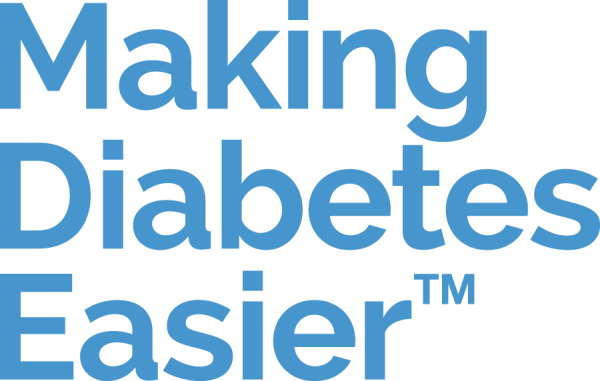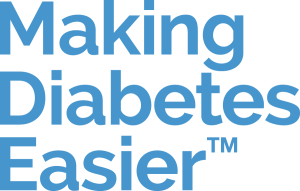What are the treatments of type 2 diabetes?

Several solutions exist for the prevention and treatment of type 2 diabetes. Initial treatment consists of implementing healthy dietary habits combined with regular physical activity. If lifestyle changes are ineffective, oral medication and/or insulin injections may be proposed [1].
Weight loss
Excess weight and obesity are recognised as primary risk factors for type 2 diabetes. They usually result from poor dietary habits and prolonged physical inactivity [1,3]. For this reason, treatment of type 2 diabetes usually begins with improving the patient's lifestyle [1,2,3].
To this end, the healthcare provider will recommend dietary changes and a program to encourage regular physical activity [1,2,3]. These lifestyle changes aim to promote weight loss and manage blood glucose levels [1,2].
Weight loss goals are specific to each person and depend on their age and their state of health [1,2].
Dietary improvements

For successful treatment of type 2 diabetes, the person’s dietary habits must be improved as soon as possible after the diagnosis has been made, the overall goal being to adapt the food intake to each person’s individual needs, goals and lifestyle. The dietary approach needs to factor in the individual based, considering their health goals, age, food preferences, finances, culture, cooking skills etc. and medication to ensure it is sustainable.[1,2,3].
To prevent and treat type 2 diabetes reducing refined carbohydrate (sugar) intake and increasing fibre is vital [1,3].
Quantity apart, special attention must also be paid to the quality and sources of carbohydrates [2]. Fruit and vegetables are recommended, along with whole-grain foods, legumes and unsweetened dairy [1,3].
People with diabetes should aim to swap out processed foods (sweets, cold drinks, ready-made meals etc.) for whole foods where possible, as processed foods are generally higher in fat, sugar and salt.
A good place to start is with Mediterranean or vegetarian-style diets that are universally regarded as healthy and, therefore, highly recommended in preventing and treating type 2 diabetes [3].
Sport and physical exercise

Regular physical activity is an essential part of the successful treatment of type 2 diabetes. It can potentially reduce the risk of developing the condition by about 30% [3].
Physical activity can be going to the gym, walking your dog, playing sports or gardening, but numerous other forms of exercise exist. Simply getting up and moving around instead of sitting for long periods is beneficial. Movement and exercising don’t only assist and contribute to improving your body composition but also have a positive effect on insulin sensitivity and glycaemia [3].
How often should a person with type 2 diabetes exercise?
It is recommended that you exercise at least 30 minutes a day to see the benefits of physical activity on your blood glucose levels [3].
Oral medication for type 2 diabetes
Although lifestyle modification (healthy eating habits and regular physical activity) always form part of the treatment for type 2 diabetes. Severe different medications are available to assist in achieving and maintaining optimal blood glucose control and potentially reduce the risk of complications. Metformin is the recommended first-line medication for the treatment of type 2 diabetes, but there are several alternatives available if side effects are present or it proves ineffective [1].
How does metformin work?
Along with lifestyle changes, metformin is the standard medication for treating type 2 diabetes [1].
The main benefits of this particular diabetes medication are that it acts on insulin resistance, doesn’t cause hypoglycaemia, and can potentially reduce vascular complications brought on by diabetes [1].
Metformin is generally weight neutral or can result in modest weight loss, making it a favourable option for individuals with diabetes aiming to improve their body weight [1].
Potential side effects of metformin
Metformin may be poorly tolerated and cause unwanted side effects, most commonly gastrointestinal disorders. Treatment should therefore start with relatively low prescribed doses or consider an extended-release formulation [1].
Metformin is contraindicated in cases with renal failure (filtration rate less than 30 ml/min) and severe liver disease [1].
Insulin
If blood glucose targets are not achieved with oral medication, Insulin therapy may be proposed as a treatment for type 2 diabetes to improve blood glucose control and ultimately reduce the risk of potential complications [1].
Insulin doses should be individualised to optimise blood glucose control but not cause frequent low blood glucose (hypoglycaemia) and avoid too high doses that can potentially contribute to weight gain.
Sources
- Andreas F. H. Pfeiffer, Harald H. Klein. The Treatment of Type 2 Diabetes. Dtsch Arztebl Int. 2014 Jan; 111(5): 69–82.
- Bolla AM, Caretto A, Laurenzi A, Scavini M, Piemonti L. Low-Carb and Ketogenic Diets in Type 1 and Type 2 Diabetes. Nutrients 2019, 11(5), 962.
- Hubert Kolb, Stephan Martin. Environmental/lifestyle factors in the pathogenesis and prevention of type 2 diabetes. BMC Med. 2017; 15: 131.





